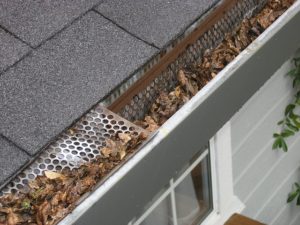Common Basement Waterproofing Mistakes Homeowners Make

If your basement has water, you need to do your best to avoid these mistakes.
Avoiding basement leaks is important because water damage can be detrimental to your home’s foundation. There are several ways to waterproof your basement. If your basement has water, you need to do your best to avoid a few mistakes. Some of these mistakes could lead to more serious problems that will cost a significant amount of money to repair. Here are some of the most common waterproofing mistakes that homeowners make.
Ignoring Water Runoff
If you notice dampness or watermarks in your basement, you need to find the source of the moisture in order to remedy it. Unchecked water damage can lead to more severe problems such as sloping floors or cracks in the foundation. You need to fix any runoff issues before you begin the waterproofing process, or else all your work will be in vain. If your gutters and downspouts are clogged and do not handle water runoff effectively, you will always have water issues in your basement. All water runoff needs to be drained away from your basement and foundation properly.
Using Waterproof Paint
While waterproof paint is a good way to protect your walls from water damage, it is not solely relied on. Waterproof paint might seem like a cheap, effective way to keep your basement clean and dry. Unfortunately, it does not provide complete protection. Relying only on paint for an easy solution can cause lime to form on your walls, which leads to bubbling and cracking in the paint. This is especially detrimental to concrete walls and floors.
Not Addressing Your Soil
The soil beneath your house is crucial in providing a stable, solid foundation. If the soil around your home is packed too tightly, it could cause your foundation to sink or collapse. To prevent water from potentially entering your basement, it is crucial to have your home on an incline where the soil slopes away from your home. Any depressions around the foundation should be filled in to stop water from soaking too deep underneath the soil.
Sealing the Cold Joints in the Basement
The cold joint in your home is where the basement wall meets the floor. Many homeowners are tempted to seal this gap with more concrete to prevent water from seeping in. But this does more harm than good. By not allowing the pressure to escape through this gap, it can spread along the basement walls and ceiling, leading to structural issues.
Contact All Aspects Waterproofing for Basement Waterproofing Today!
If you are ready to get a professional to waterproof your home’s basement, contact All Aspects Waterproofing, a Better Business Bureau A+ rated company with over 30 years of experience in the DC./Maryland/Virginia area. We have a great deal of experience in waterproofing, mold testing, and mold remediation, and we want to make you feel at home again. Contact us online or by calling 1-866-999-3110 or 301-766-4420. To see what we’re up to, follow us on Facebook, Twitter, Pinterest, YouTube, LinkedIn, and Houzz.
